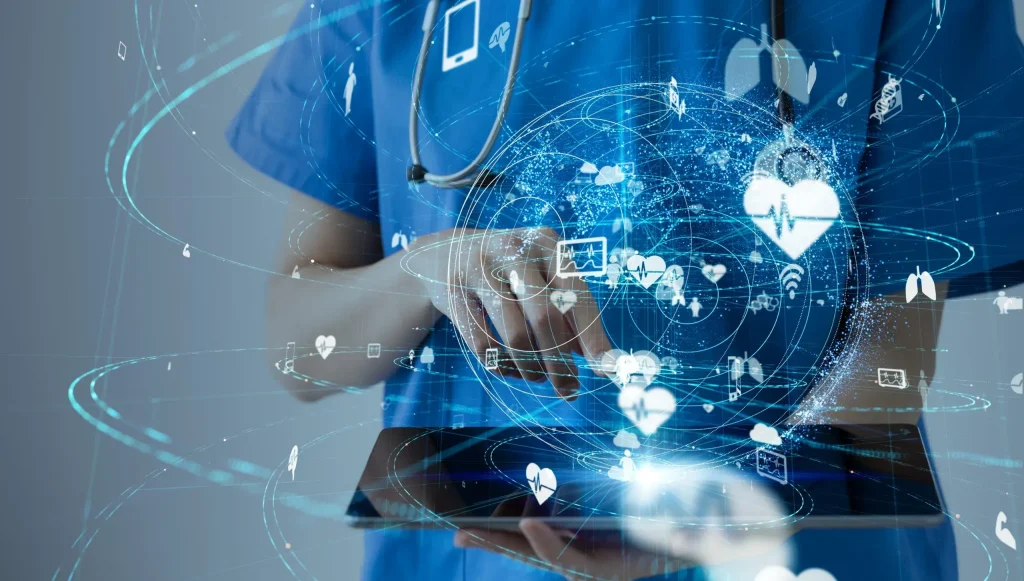Technology in Healthcare is driving a quiet revolution across clinics and hospitals, redefining how clinicians diagnose, monitor, and treat patients, while making care more accessible through telemedicine. From AI-powered diagnostics to advanced imaging analytics, healthcare technology breakthroughs are enabling faster, more accurate decisions at the point of care. Hospitals are embracing patient care innovations that streamline workflows, reduce errors, and empower patients to participate actively in their own health journeys. Digital health platforms, remote monitoring, and secure data sharing connect caregivers with patients wherever they are, improving outcomes and engagement. As these technologies mature, clinicians must balance innovation with rigorous governance to sustain trust and ensure equitable access to AI in healthcare.
This evolving field, often described as health tech, digital medicine, or medical technology, reflects how data-driven tools are reshaping care delivery. In practice, Technology in Healthcare underpins digital health ecosystems by linking interoperable data, intelligent analytics, and patient-facing apps. LSI-inspired connections link concepts such as digital health ecosystems, data interoperability, and intelligent analytics to patient outcomes. Clinical workflows, patient engagement, and remote monitoring are harnessed through AI-enabled insights and secure cloud platforms that support informed decisions. In short, the trend of tech-enabled care points to a more proactive, precise, and accessible health system.
Technology in Healthcare: AI, Telemedicine, and the Rise of Healthcare Technology Breakthroughs
Technology in Healthcare is reshaping every layer of care by harnessing AI in healthcare, telemedicine, and digital health platforms to deliver faster, more accurate insights. AI-powered diagnostics and decision-support tools help clinicians detect subtle patterns in imaging and patient data, driving healthcare technology breakthroughs that translate into earlier interventions and better outcomes. Telemedicine extends expert reach beyond traditional walls, enabling remote assessments and timely care for patients who might otherwise face delays.
As digital health ecosystems mature, patient care innovations emerge from connected devices, interoperable records, and real-time data streams. The convergence of AI, remote monitoring, and cloud-based health platforms supports proactive management of chronic conditions, reduces unnecessary tests, and shortens wait times. Responsible deployment—grounded in validation, transparency, and governance—ensures AI models remain fair, explainable, and safe, maximizing their positive impact on patient outcomes.
Technology in Healthcare: AI, Telemedicine, and the Path to Integrated Digital Health
The expansion of digital health and data interoperability is transforming how care teams collaborate. Wearables and home monitoring devices feed continuous data into interoperable EHRs and clinical dashboards, enabling more precise treatment adjustments and empowering patients to participate actively in their care. This alignment across devices, portals, and labs creates a seamless information flow that underpins patient care innovations and improves the quality and efficiency of care.
However, realizing these benefits requires robust privacy, cybersecurity, and equitable access. Interoperability standards, secure data exchange, and user-friendly interfaces build trust and encourage sustained engagement with digital health tools. By prioritizing governance and equitable access, healthcare technology breakthroughs can reach diverse populations, ensuring that AI in healthcare, telemedicine, and digital health positively transform outcomes for all patients.
Frequently Asked Questions
What is Technology in Healthcare, and how are healthcare technology breakthroughs and AI in healthcare driving patient care innovations?
Technology in Healthcare encompasses AI, telemedicine, digital health, wearables, and interoperable data systems that enhance diagnostics, treatment, and monitoring. AI in healthcare improves image analysis, risk prediction, and personalized care, while healthcare technology breakthroughs expand access and efficiency. These advances support patient care innovations by reducing delays, improving accuracy, and enabling proactive management, all while prioritizing safety, governance, and transparency.
How does Technology in Healthcare enable telemedicine and digital health to expand access and improve patient outcomes through remote monitoring and data interoperability?
Telemedicine extends expert care to patients regardless of location, improving access and timeliness. Digital health platforms and wearable data shared via interoperable EHRs support remote monitoring, informed clinical decisions, and timely interventions. Strong governance, privacy protections, and user-centered design help ensure these healthcare technology breakthroughs deliver safe, equitable, and patient-centric care.
| Theme | Key Points | Notes / Examples |
|---|---|---|
| Introduction | Technology in Healthcare is a daily reality reshaping diagnosis, treatment, and monitoring; convergence of AI, remote monitoring, and digital health expands reach, reduces errors, and empowers patients. | Authored emphasis on integration across hospitals and startups; outcomes, accessibility, and efficiency improvements. |
| AI in Healthcare | AI aids radiology and pathology; triage in primary care; predictive analytics; supports proactive interventions. | Requires rigorous validation, transparency, and governance to ensure safety, fairness, and explainability; can shorten wait times and personalize care. |
| Telemedicine | Extends reach, breaks geographic barriers; enables remote care for chronic conditions; includes asynchronous messaging and remote monitoring. | Interoperable health information systems give clinicians a complete view of history, labs, medications, and imaging; reduces unnecessary tests. |
| Digital Health & Data Interoperability | Digital health backbone: portals, apps, wearables; data flows between care settings; interoperable EHRs, labs, and imaging. | Governance and cybersecurity are critical; privacy controls and strong authentication support trust and engagement with digital tools. |
| Wearables & Remote Monitoring | Real-time data from wearables and sensors; at-home management of chronic conditions; clinician dashboards enable timely interventions. | Facilitates patient engagement and behavior change; improves outcomes through early action when readings drift. |
| Challenges | Privacy/security, equity of access, clinician workload, training, and governance; regulatory oversight needed. | Tools should augment, not burden, clinicians; address disparities to ensure broad benefit and maintain trust. |
| Future of Patient Care | Integrated systems linking data, devices, and people; advanced AI for imaging/genomics/wearables; predictive prevention. | Interoperability standards will mature to enable a connected, secure health system with smoother patient experiences. |
Summary
Table summarizes the key themes from Technology in Healthcare: AI, telemedicine, digital health, wearables, data interoperability, challenges, and the future trajectory of patient care.

